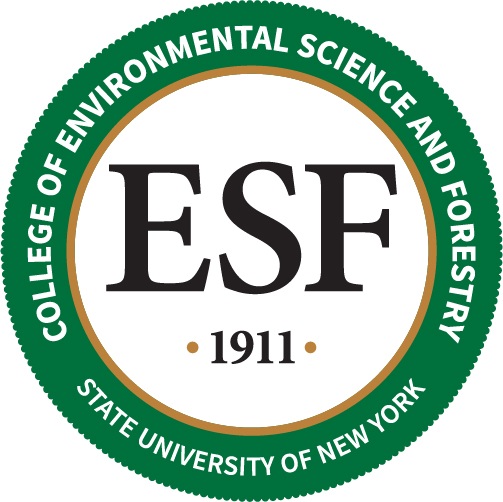Newswise — A new report by the Climate & Applied Forest Research Institute (CAFRI) and SUNY College of Environmental Science and Forestry (ESF) outlines the development of a map-based carbon accounting system and how it can be an essential tool for New York state to achieve its net-zero emissions target by 2050.
Although technologies like solar and wind energy will support 85 percent of the state’s emissions reduction goal, the remaining 15 percent of emissions — primarily from economic sectors reliant on fossil fuels — must be offset through carbon sequestration, mainly by forests. To meet this need, the state must approximately double the size of its existing forest carbon sink by 2050.
“We often say that New York’s path to carbon neutrality goes through the woods,” said Dr. Colin Beier, an Associate Professor in the Department of Sustainable Resources Management at ESF, who led the project with funding from the New York State Department of Environmental Conservation (DEC). “In other words, New York needs to rapidly grow and sustain a larger forest carbon sink, but it's an ecologically and socially complex challenge.”
Despite covering about two-thirds of the state, many of New York's forests are not in optimal condition due to historical factors and emerging threats. Invasive species, insect pests and deer overpopulation pose significant challenges, while socioeconomic factors including a weak forest industry and development pressure impact landowners' management options. The carbon mapping system built by ESF was designed to represent this complex and changing forest landscape, which is mostly owned in small parcels with diverse landowner objectives.
“CAFRI’s New York Carbon Assessment is at the forefront of site-level forest carbon accounting,” said Fiona Watt, New York State Forester and Director of the DEC Division of Lands and Forests. “The innovative map-based methodology provides a valuable forest carbon baseline and is a tool for measuring, monitoring, and predicting change over time. This tool will help inform local, regional, and statewide forest management decisions to achieve net-zero emission targets mandated by New York State’s Climate Leadership and Community Protection Act.”
Scientists at ESF used satellite imagery and machine learning to translate the U.S. Forest Service’s field measurements into detailed statewide maps of carbon storage and sequestration. Beier explained that this provides high-level estimates of forest climate benefits at the scale of individual properties, where landowners make decisions and voluntary programs operate. He believes this can guide climate action by targeting the right actions in the right places and efficiently tracking progress.
“It is a best-in-class application of carbon science,” said Dr. John Battles, Professor of Forest Ecology at the University of California Berkeley, who served as an external project reviewer, "that combines robust technology with trusted field inventories to deliver reliable, spatially explicit, wall-to-wall estimates of carbon storage across New York's vast forested landscape.”
New York’s map-based accounting system can be used to target where to protect the most carbon-dense lands from deforestation, where to best establish new forests, and where to improve sequestration and storage on working lands, among other strategies to reduce greenhouse gases. The system also provides statewide monitoring for the NY Connects project, a new $60 million initiative funded by USDA to help landowners implement climate-smart forestry and farming practices.
"New York State is on an exciting and challenging journey toward net-zero – one that relies very substantially on our forest lands," said ESF President Joanie Mahoney. "We're proud of CAFRI's innovative work to develop powerful information and tools to meet this challenge, and look forward to continuing ESF’s many collaborations with DEC to help realize New York's ambitious climate goals."
The NYS carbon monitoring system is built on open-access and freely-available data sources and computing tools, making it cost-efficient and extendable to other regions. CAFRI provides data sharing and consulting services with a growing group of public and private-sector partners via support from the NYS Environmental Protection Fund. Learn more at www.esf.edu/cafri-ny/.
About SUNY ESF
The SUNY College of Environmental Science and Forestry (ESF) is dedicated to the study of the environment, developing renewable technologies, and building a sustainable and resilient future through design, policy, and management of the environment and natural resources. Members of the College community share a passion for protecting the health of the planet and a deep commitment to the rigorous application of science to improve the way humans interact with the world. The College offers academic programs ranging from the associate of applied science to the Doctor of Philosophy. ESF students live, study and do research on the main campus in Syracuse, N.Y., and on 25,000 acres of field stations in a variety of ecosystems across the state.
MEDIA CONTACT
Register for reporter access to contact detailsRELEVANT EXPERTS
Colin Beier
Associate Professor
SUNY College of Environmental Science and Forestry